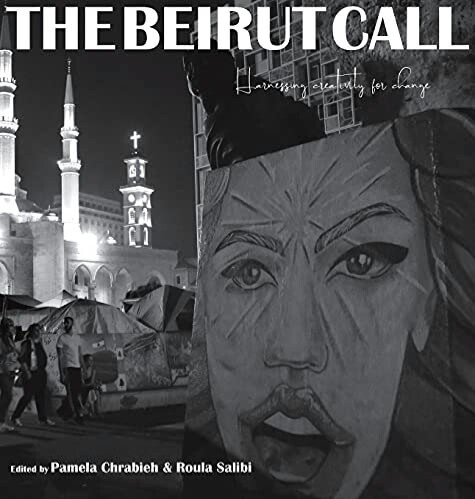Beirut: The Strong Lady Lives
The explosion of a stockpile of 2,750 tons of highly volatile ammonium nitrate off-loaded into a warehouse in the port of Beirut on August 4, 2020, provided the catalyst for The Beirut Call, born from unimaginable tragedy. The explosion, perhaps the most powerful non-nuclear blast in history, ripped apart a city: It killed more than 200 people, injured more than 7,000, and displaced almost 300,000.
The Beirut Call represents a cooperative effort by publishers, journalists, translators, poets, musicians, choreographers, photographers, singer-songwriters, activists, and visual artists, all of whom share a love for Beirut and a belief that art can bring about change, agreeing with Mitri Raheb that
art is one of the most important elements for people’s survival ... art allows the soul not only to survive but to thrive.
Black and white illustrations and photographs showing scenes from the revolution of October 17, 2019, and the devastation caused by the explosion on August 4, together with sketches on paper and digital art, accompany the text. Footnotes provide references and web links to more detailed information.
In her introduction, Chrabieh writes about the Nabad program (heartbeat in Arabic), established by Bethlehem’s Dar al-Kalima University College of Arts and Culture, largely as a response to the port blasts. The program empowers artists, art organizations, and creative enterprises in the Middle East to implement their artistic ideas and market their artworks.
Rabih Rached informatively and accessibly charts the history of culture in Beirut from Roman times up to the twentieth century. Nada Raphael gives us a further glimpse of Beirut as it was before the tragedy struck. She describes it as a
Capital with a capital C—the place where everyone meets, befriends and unfriends, falls in love or breaks up ... a melting pot of cultures, colors, and religions ... an inspiration for filmmakers, artists, street artists, and painters ... a picture, or rather an album, where colors meet black and white; where 18th and 19th century palaces meet modern buildings; where paved streets lead you to the sea; where fishermen and businesswomen walk on the same path; where street vendors meet designer and high-end boutiques, and where the old Beetle races with the new Mercedes.
the screen lists numbers
of family and friends
names sift through my fingers
my memory of where they live
places of their work 011 – 961 –
aloo Beirut?
011 – 961 –
before hearing the familiar voice ...
Wells of weeping,
That’s what evil times
Have turned you into.
You used to quench
Our thirst for beauty,
Our love for life.
The positive messages in the book show it to be about a people looking to the future.
The positive messages in the book show it to be not about a people who feel defeated but one already looking to the future, who understand that “suffering creates creativity” and that “any destruction on the ground coincides with the construction of art.” In Nadia Wardeh’s words,
We need the power and the determination of inimitable Beirut, the strong lady who, despite all catastrophes in the past, and the current suffering, remains committed to produce Goodness, Beauty and Truth.




